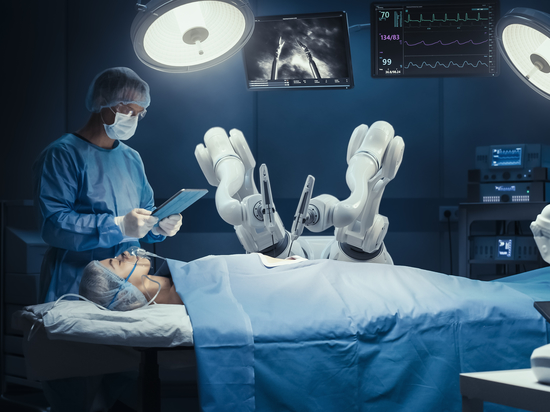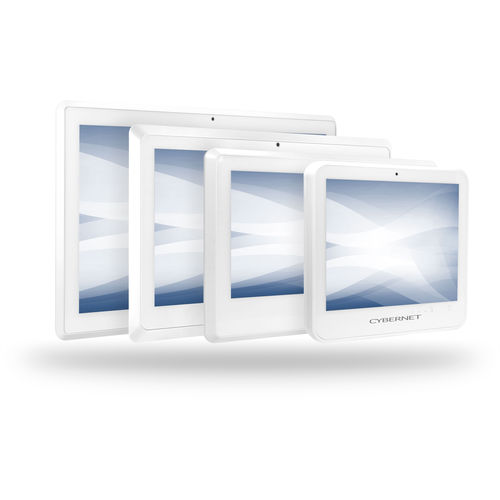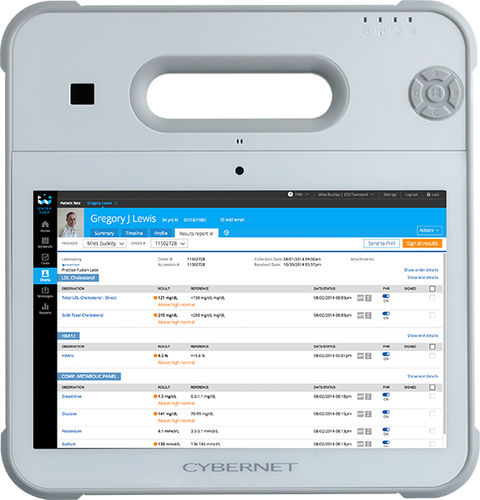
#Industry News
ESSENTIAL HOSPITAL PHARMACY EQUIPMENT LIST
Five types of hospital pharmacy equipment and why they’re essential for your department
Hospital pharmacies play a crucial role in managing the supply and administration of all medications within the hospital or medical center. They oversee prescribed treatment plans and dosage calculations and determine the most appropriate ways to administer medications. This necessitates high accuracy, timeliness, and efficiency in their operations. Additionally, hospital pharmacies ensure that all medicines are safely stored, distributed, and utilized to support the institution's overall healthcare goals.
Today’s article covers the critical hospital pharmacy equipment that assists pharmacies in providing accurate and quality care. We’ll cover five types of hospital pharmacy equipment and why they’re essential for your department.
Dispensing Systems for Hospital Pharmacy
Medication dispensing involves the systematic preparation and administration of prescribed medications to patients. It is an essential component of the overall medication management system, encompassing activities such as accurate drug preparation, verification of patient information, and monitoring to ensure the intended therapeutic outcomes are achieved.
Two dispensing systems that should be on your hospital pharmacy equipment list include:
Dosage measure racks
Dosage measure racks are essential for holding the tools required to measure the drug ingredients for a medication. Examples of these tools include graduated cylinders, syringes, and pipettes. They assist pharmacy technicians in filling prescription orders safely and accurately.
Medication and supply dispensing cabinets
Cabinets and other forms of storage units store and dispense drugs and medications. Many are automated and are called automated dispensing cabinets, or ADCs.
One ADC system, called the "carousel," is found in most hospital pharmacies. It looks like a wall-size cabinet with drawers. The drawers rotate, allowing pharmacy staff to store more drugs and medications while allowing them to access them quickly and easily.
Hospital pharmacies with decentralized pharmacy systems manage ADCs outside the central department. If your hospital pharmacy is set up this way, you will most likely need:
Medication cabinets are for hospital wards like the ICU, CCU, or any location where medication retrieval cannot wait for dispensing by the central department. Medication cabinets store a limited amount of medication, which requires periodic visits by pharmacy techs to ensure the ADC’s stock hasn’t run out or expired.
Medication dispensing carts are basically mobile ADCs. Pharma and hospital personnel can roll these workstations on wheels with their limited medication stock to wherever patients are located on the hospital floor.
Automated dispensing cabinets offer convenient access to medications and drugs in healthcare facilities. These cabinets are operated through medical-grade computers, ensuring their safe integration with other medical devices within the pharmacy department and in proximity to patients, such as medication dispensing carts. The medical-grade certification guarantees these computers meet stringent safety standards and can effectively coexist with other medical equipment.
These automated dispensing cabinets have advanced security features to ensure secure access. These include a built-in RFID reader and Imprivata Single Sign-On, which grant access only to authorized pharmacy personnel. This helps prevent unauthorized access to the valuable drugs and medications stored within the cabinets, promoting safety and control over medication distribution.
These medical-grade computers have top-notch security features and are designed with practicality in mind. The fanless cooling design ensures a cleaner and sterile environment within the pharmacy by reducing the circulation of contaminants. Moreover, the IP65 sealed casing offers protection against dust and liquids, simplifying cleaning and sanitizing the computers. This is crucial for upholding hygiene standards in pharmacy settings.
Overall, these automated dispensing cabinets, paired with the attached medical-grade computers, offer a secure, hygienic, and efficient solution for medication management within healthcare facilities.
Pharmacy Compounding Equipment
Compounding refers to customizing medication by mixing, combining, altering, or eliminating certain ingredients from drugs to match a patient's prescription. This practice is essential for tailoring patients' prescriptions to their needs and preferences. For instance, some patients may have allergies to certain components found in standard drugs, while others may have difficulty swallowing capsules. Compounding addresses these issues and ensures patients receive the needed medications without any unnecessary delays.
Compounding equipment
Standard hospital pharmacy equipment for compounding includes:
Balance scales: Used to weigh medications accurately.
Graduated cylinders and pipettes: For measuring liquid medications and other fluids.
Mortars and pestles: For crushing drugs and mixing medications.
Spatulas: Used to scoop and move those medications in paste form.
Pharmacy isolator and clean rooms
Certain medications may be dangerous to pharmacy technicians during compounding, or the drugs need to be in highly sterile conditions to be handled properly. In these situations, compounding is performed in pharmacy isolators and clean rooms.
A pharmacy isolator is basically a sealed tank. Gloves stitched to the tank let pharmacists reach inside to work with the drugs. A clean room is similar but room-sized. Everything from the surfaces of the isolator or room to their air is carefully controlled and filtered to be as dust and microbe-free as possible.
Computers play a vital role in various tasks in healthcare environments, including weighing drugs and keeping track of prescriptions. Medical computers are chosen for their specific features that make them well-suited for healthcare settings. These features include a fanless design, which helps prevent the circulation of particles that could contaminate medications, sealed IP65 bezels that facilitate easy cleaning, and medical-grade certifications ensuring their suitability for use in a medical setting.
Drug Storage and Refrigeration
Proper medication storage is of vital importance to hospital pharmacies. Correctly stored drugs maintain their effects and potency. On the other hand, improperly stored ones can become unusable before expiration. Some may even become toxic and cause illness in patients.
High heat degrades medications, reducing their effectiveness. Humidity that is too high or too low has similar effects. Whether natural or artificial, direct lighting negatively affects a drug’s potency through photocomposition.
Proper drug storage cabinets in hospital pharmacies are cool, dry places. Their interior temperature does not exceed 77°F, with humidity set between 40 to 70 percent. Lighting is usually turned off or kept at a minimum.
Pharmacy Refrigeration Unit
One critical type of drug storage unit is the pharmacy refrigerator or freezer. In nearly all hospital pharmacies, these specialized fridges are designed to store temperature-sensitive medications and pharmaceutical items in a cold environment. The pharmacy freezer is custom-built to provide the specific conditions for storing these sensitive items, ensuring their effectiveness and patient safety.
Medication Packaging and Labeling
Mislabeling in pharmacies occurs when the label on a medication or drug does not reflect the medication itself. For example, the medication may have the wrong ingredients. Mistakes in how to use the drug (e.g., wrong dosage) can also result from mislabeling.
Patients following these label mistakes can suffer greatly – overdoses, heart attacks, strokes, toxicity, and organ failure are just some effects that may result in a mislabeled med. The following tools can help prevent such mistakes from occurring.
Label makers and printers
Medication packaging and labeling must be as clear and accurate as possible. Your pharmacy team can start by ensuring the labels printed by the department's various label printers are legible and easy to read. This includes the barcode and even QR codes (if your pharmacy uses the latter).
The printouts should follow any standards set by the department, hospital, and state laws; for example, many require the medication’s name to be in Bold. Medication side effects are usually attached to the packaging for patients and providers to review.
Medical computers and electronic medical records
Medical computers play a large role in safe and clear medication packaging. Pharm techs can bring up patients’ electronic medical records (EMR) for their most recent prescriptions. That way, the techs can quickly note errors like possible double-orders of meds. The EMR can be set to alert staff for potential issues like drug allergies or adverse medication interactions (i.e., when two or more meds conflict with each other).
Track and trace, or simply tracking, follows a prescription throughout the medication management system. By tracking a medication’s whereabouts, the pharmacy can ensure it reaches the right patient in the suitable form at the proper date and time. Barcode scanners and, sometimes, RFID readers attached or even built into a medical computer or tablet ensure tracking is easy and accurate.
PPE and MSDS
Pharmacists and pharmacy technicians deal with many medications and drugs daily. Many chemicals, solvents, or radioactive substances found in them are hazardous to human life. Antineoplastics, used for cancer treatment medications, can increase the risk of miscarriage or birth defects. Acetone is highly volatile and flammable, and hydrochloric acid can cause severe burns.
Hospital pharmacies must ensure the safety of their staff. First, all hazardous substances in the department should be stored well away from common work areas. Security measures should be set up to prevent unauthorized personnel from accessing the site. A medical computer with an RFID reader and Imprivata Single Sign-on ensures that only authorized staff can open the units.
If there’s an emergency, safety equipment like the following should be within easy reach for all pharm workers:
Fire extinguishers to put out any fires.
First-aid kits for treating minor scrapes and cuts.
An eye wash station to flush any chemicals from the eyes.
A spill kit to clean up any chemical spills.
Some hospital pharmacies have emergency showers as safety features. These are useful for washing away hazardous chemicals from exposed flesh. Having one depends on the size of your hospital and its budget.
Personal protection equipment (PPE)
Staff handling hazardous materials must wear personal protective equipment (PPE) to ensure safety. This includes wearing masks to protect the respiratory system, goggles to shield the eyes, and gloves to safeguard the hands. Employees face even greater risks when working with compounding materials and must wear PPE throughout the process to minimize the potential dangers.
Material safety data sheets (MSDS)
Material safety data sheets, or MSDSs, are documents dealing with hazardous materials. They are an essential part of a pharmacy’s equipment list and provide important information on the materials: their hazardous ingredients, their dangers (flammability, explosiveness), their effects on human health, and emergency and first-aid procedures.
Like all safety equipment in the pharmacy, MSDS should be placed where staff members can easily see and use them.
Master Your Hospital Pharmacy Equipment List with Cybernet
Modern pharmacies are extraordinary examples of technological advancement. They are equipped with state-of-the-art facilities and technologies to dispense medications to patients efficiently. In addition to serving patients, pharmacies also prioritize the safety of their staff by implementing advanced measures to handle hazardous materials encountered in their daily operations.
Contact our staff if your hospital pharmacy is looking for the best ways to equip your department. Modern healthcare is highly digital, and computers play huge roles in medicine, including the pharmacy department. Our team will be more than happy to explain how our medical computers, tablets, and other computers play essential roles in your hospital pharmacy equipment list.







